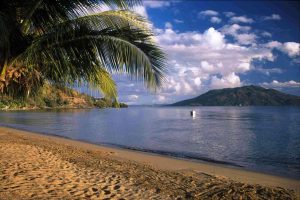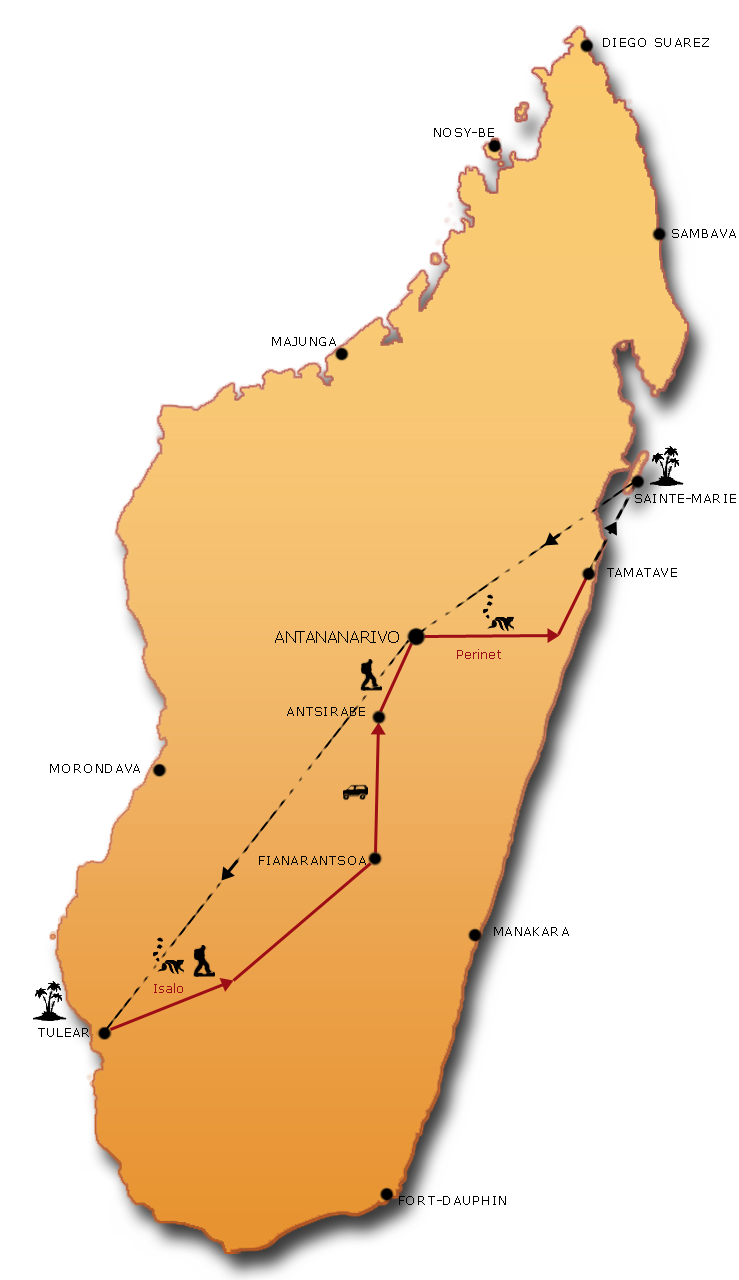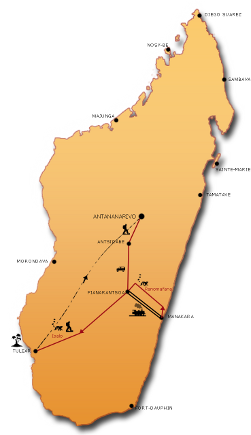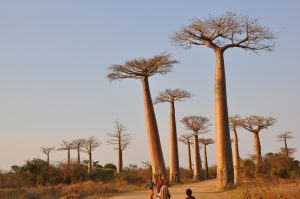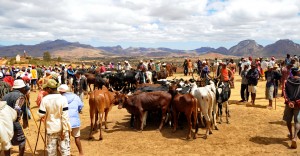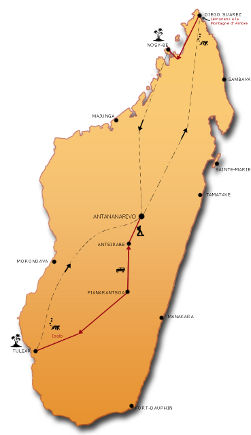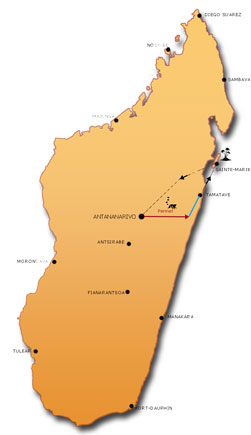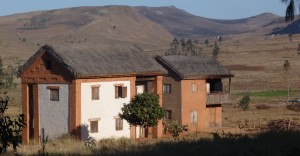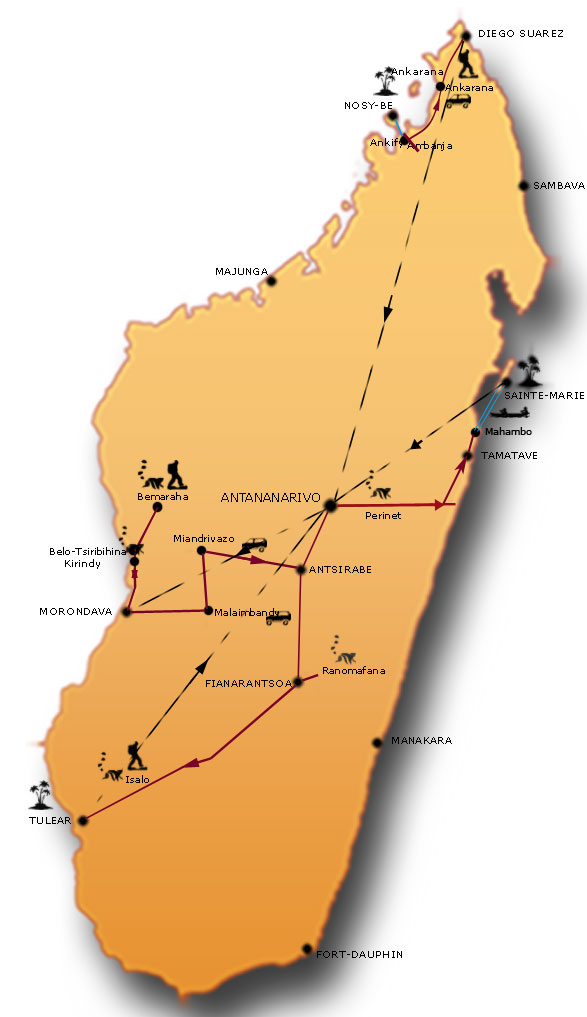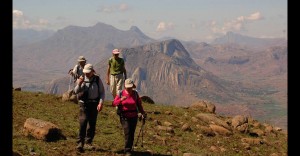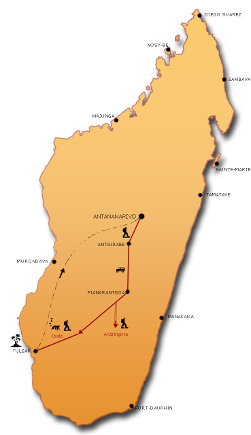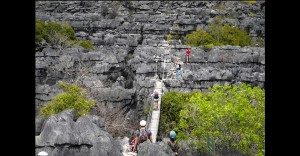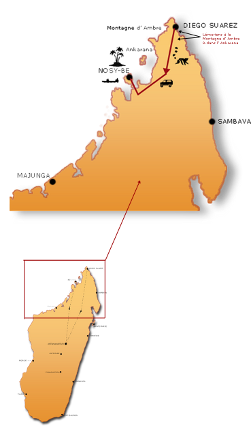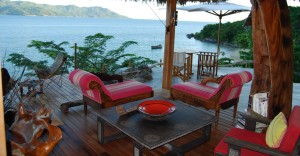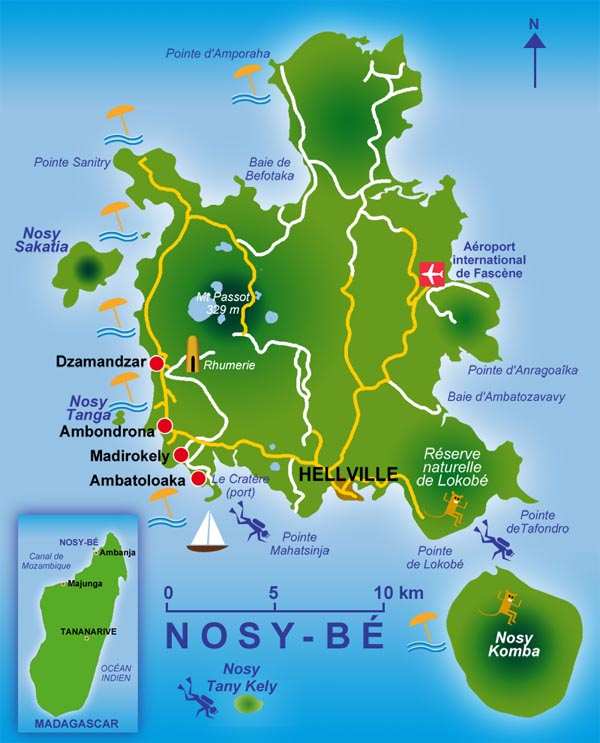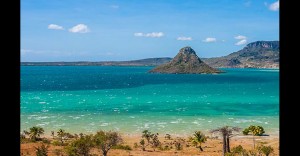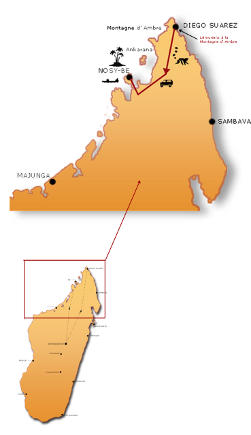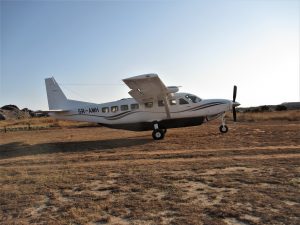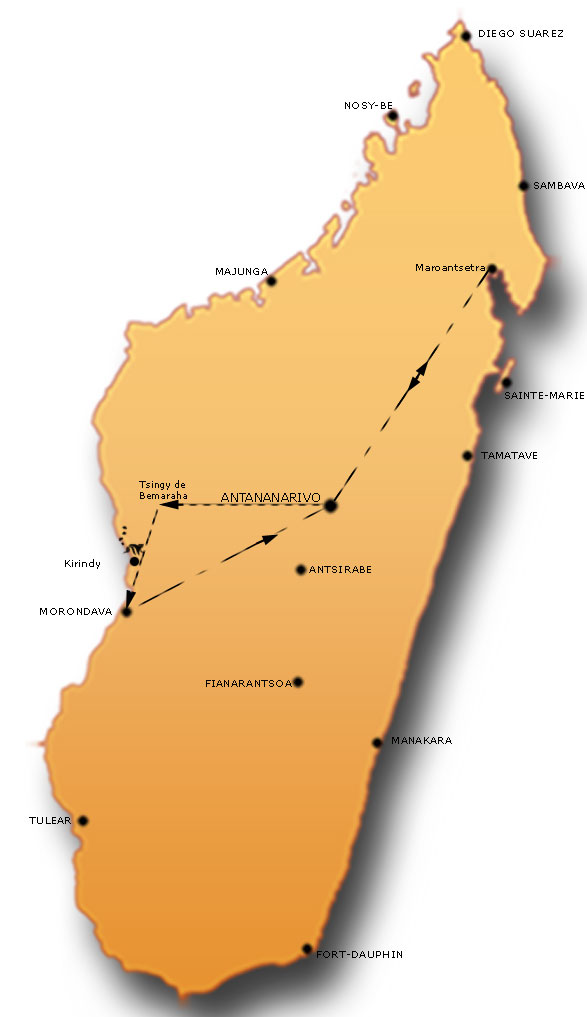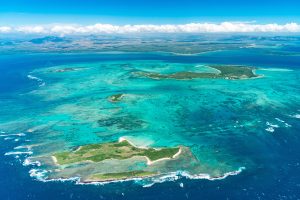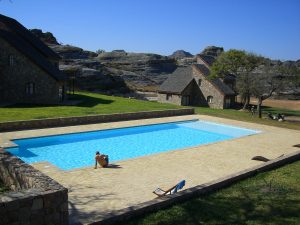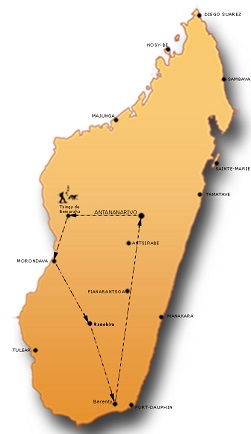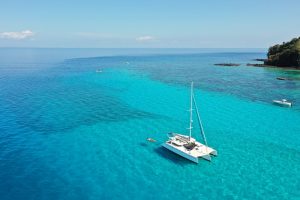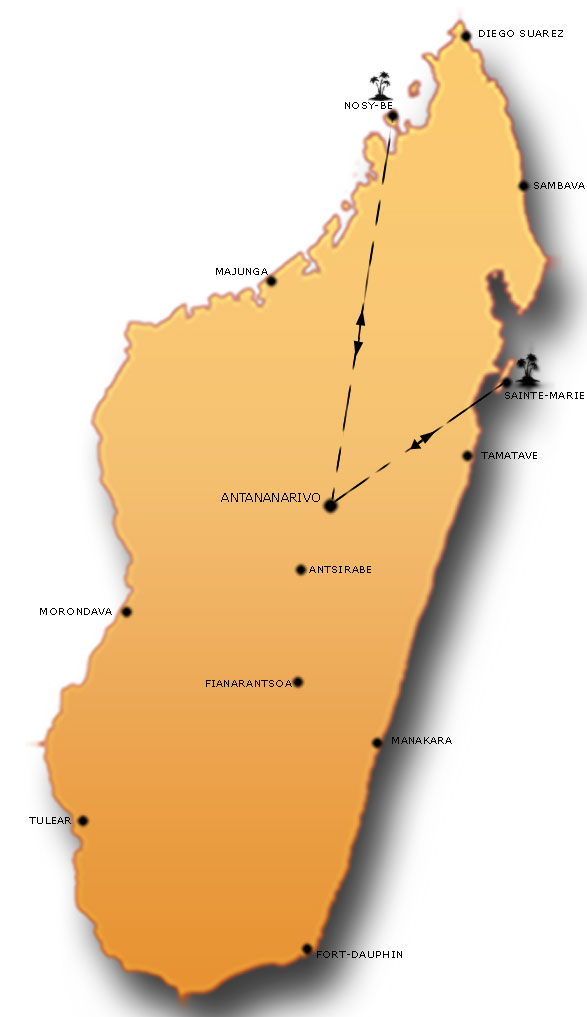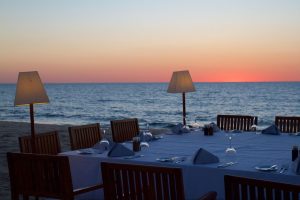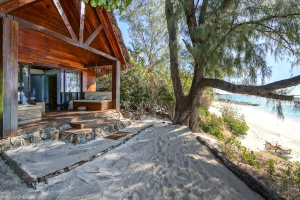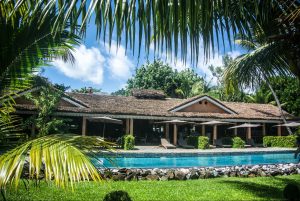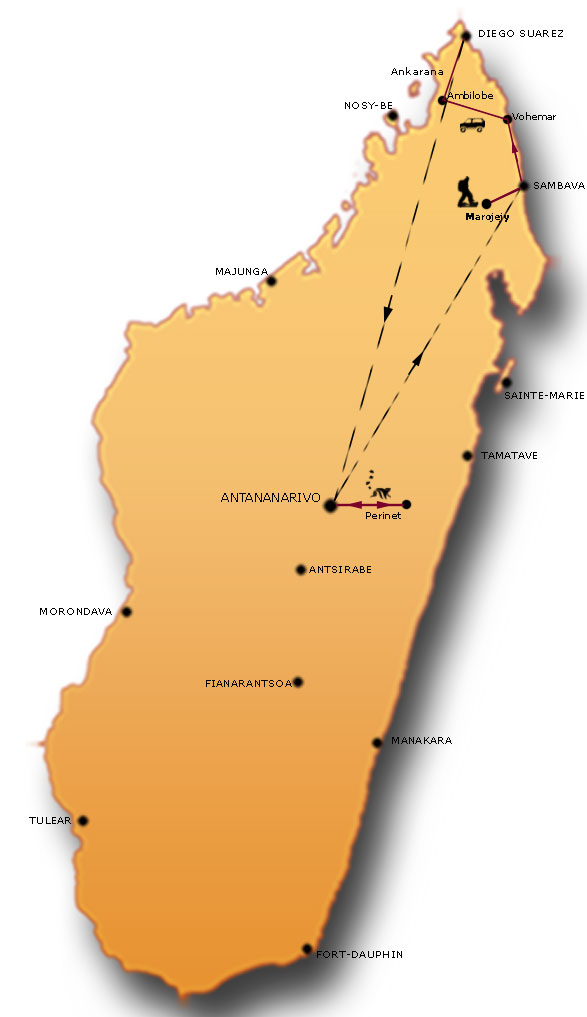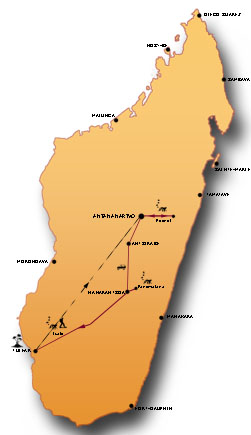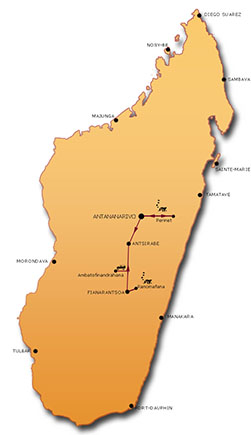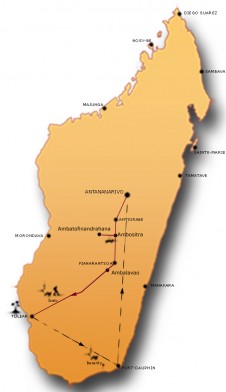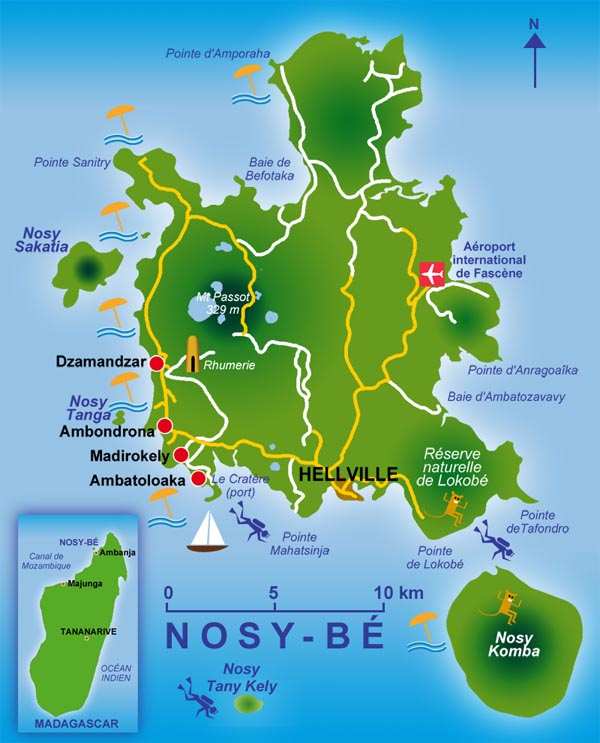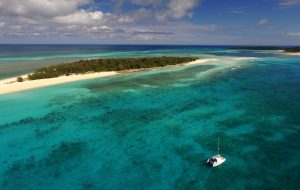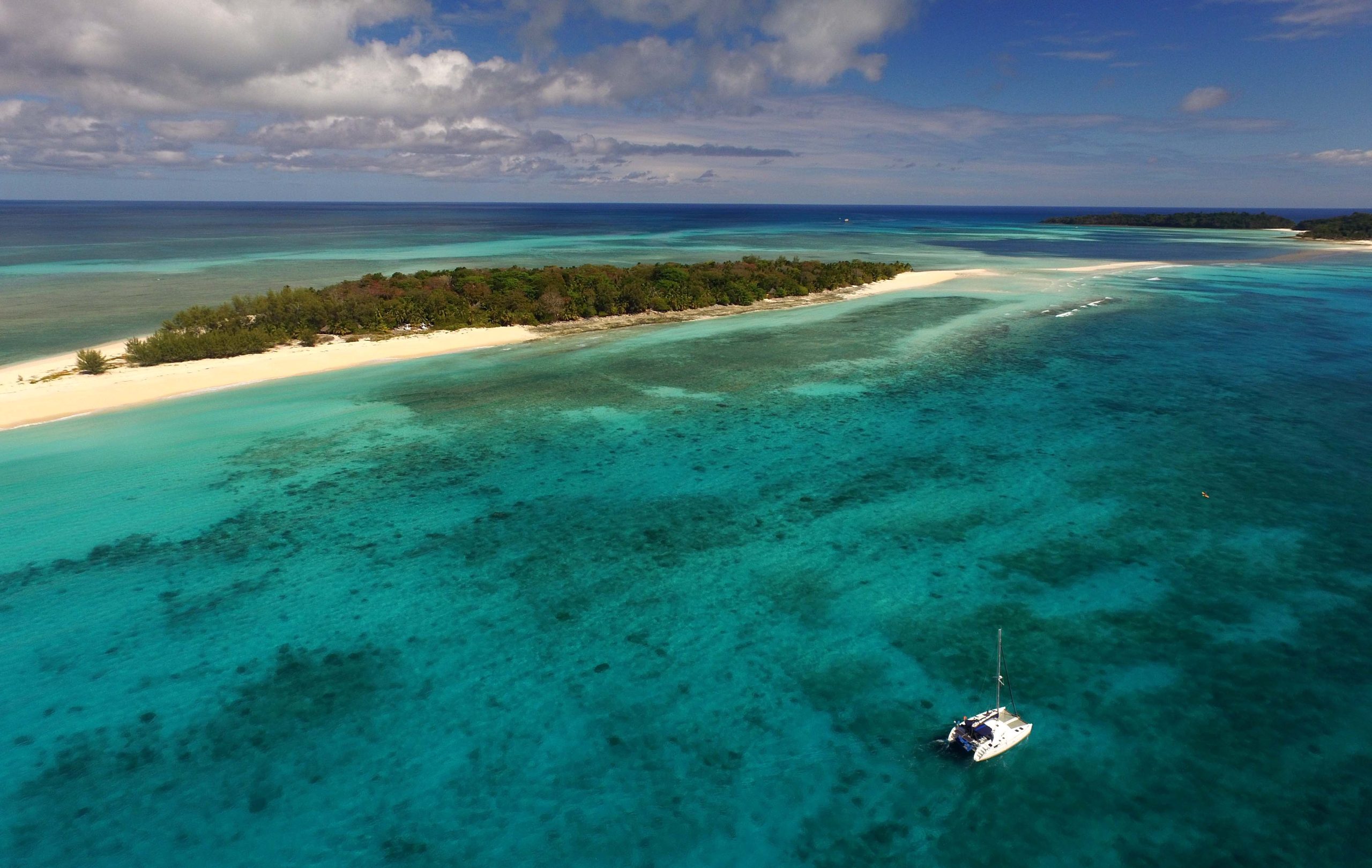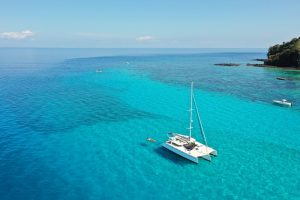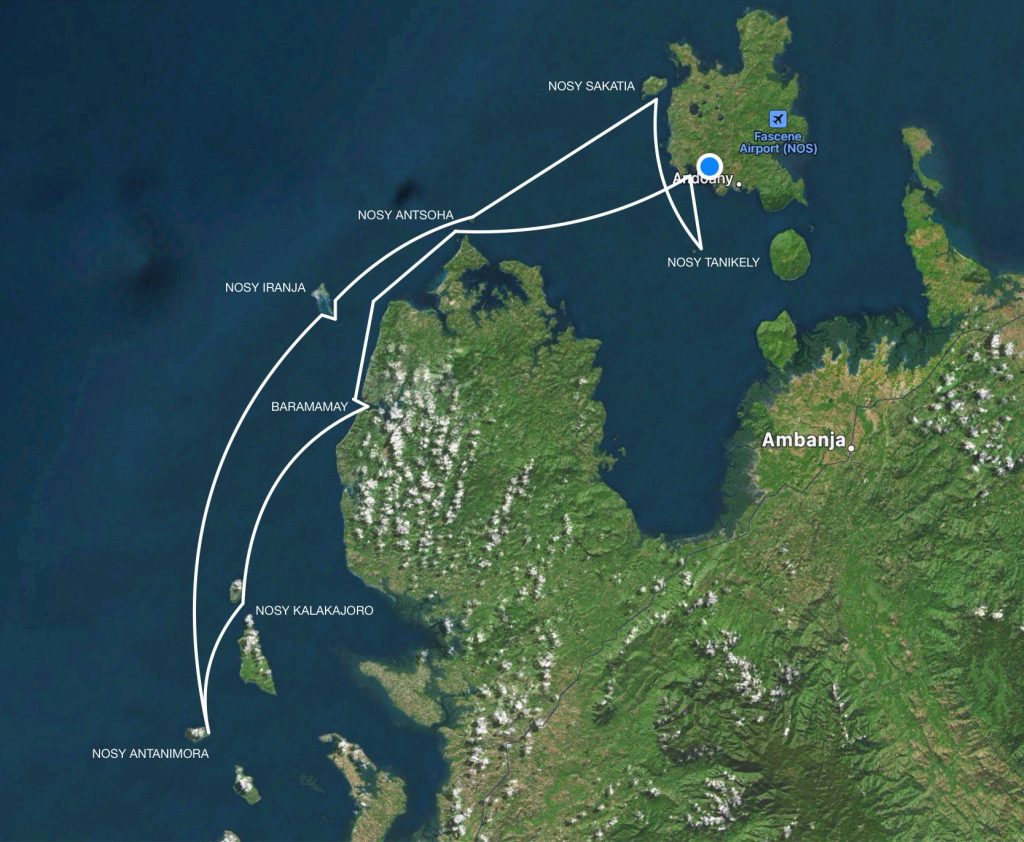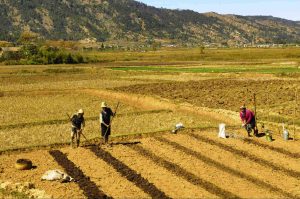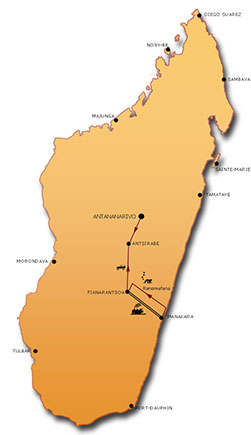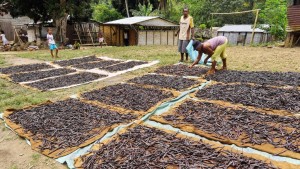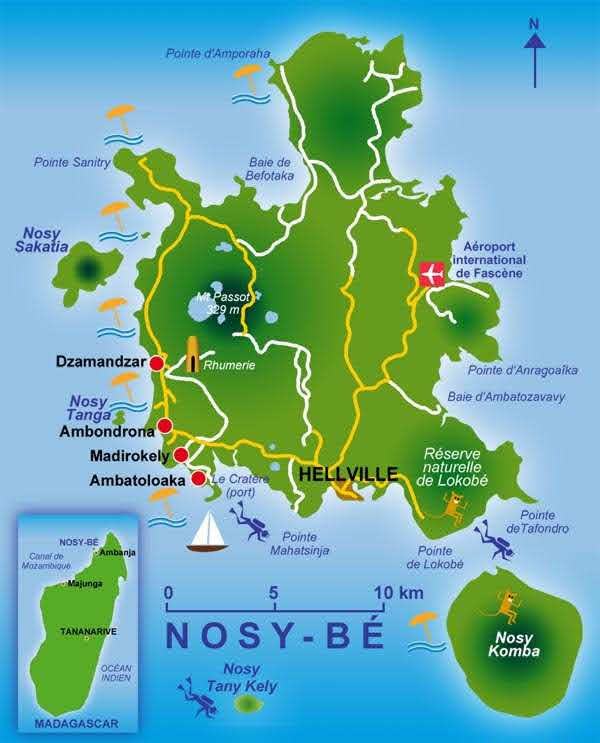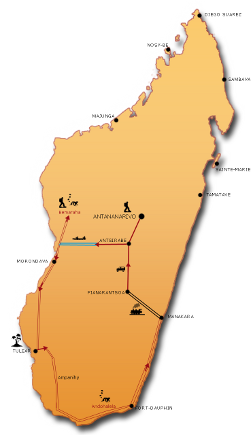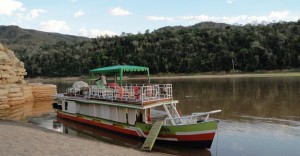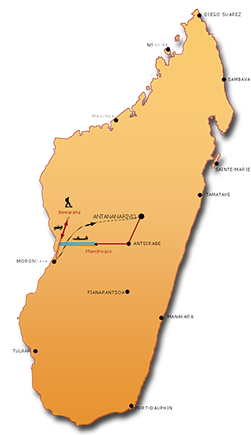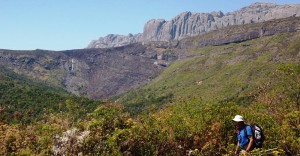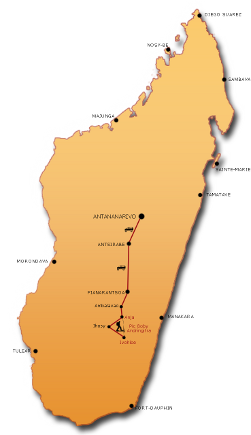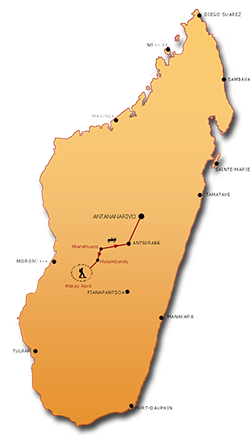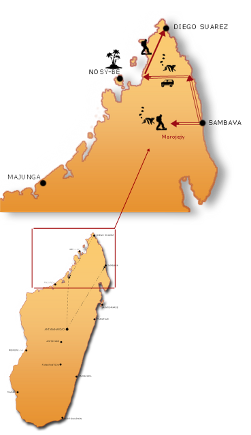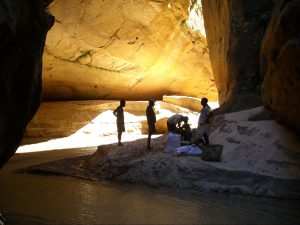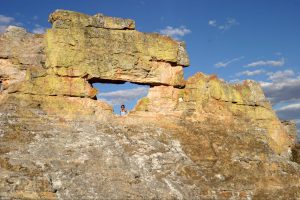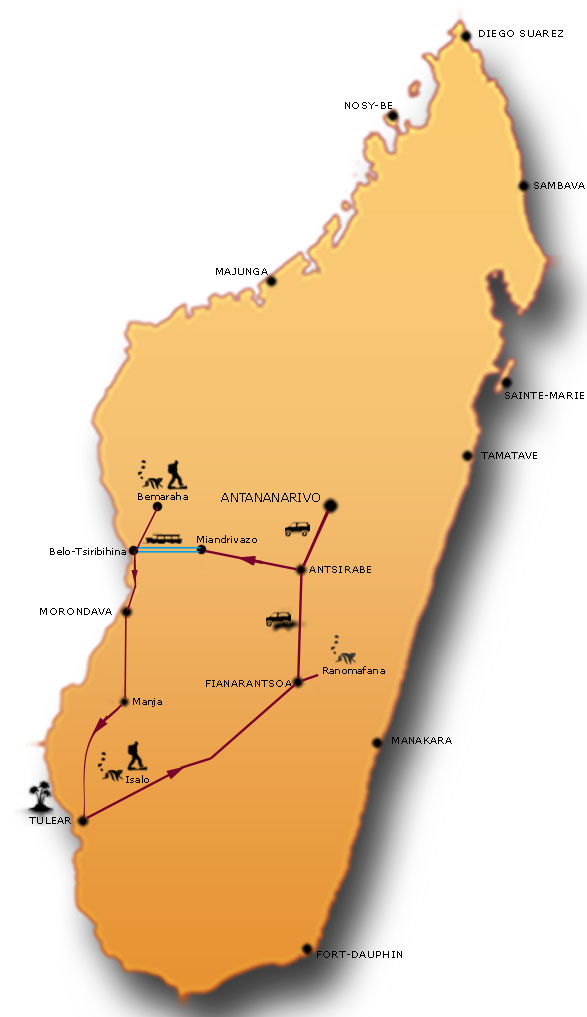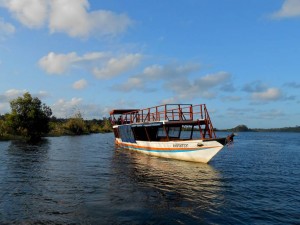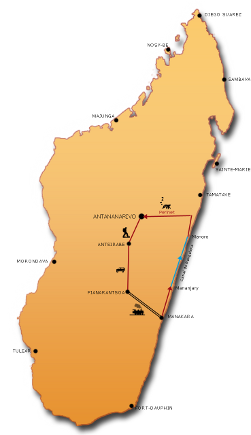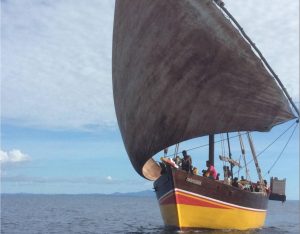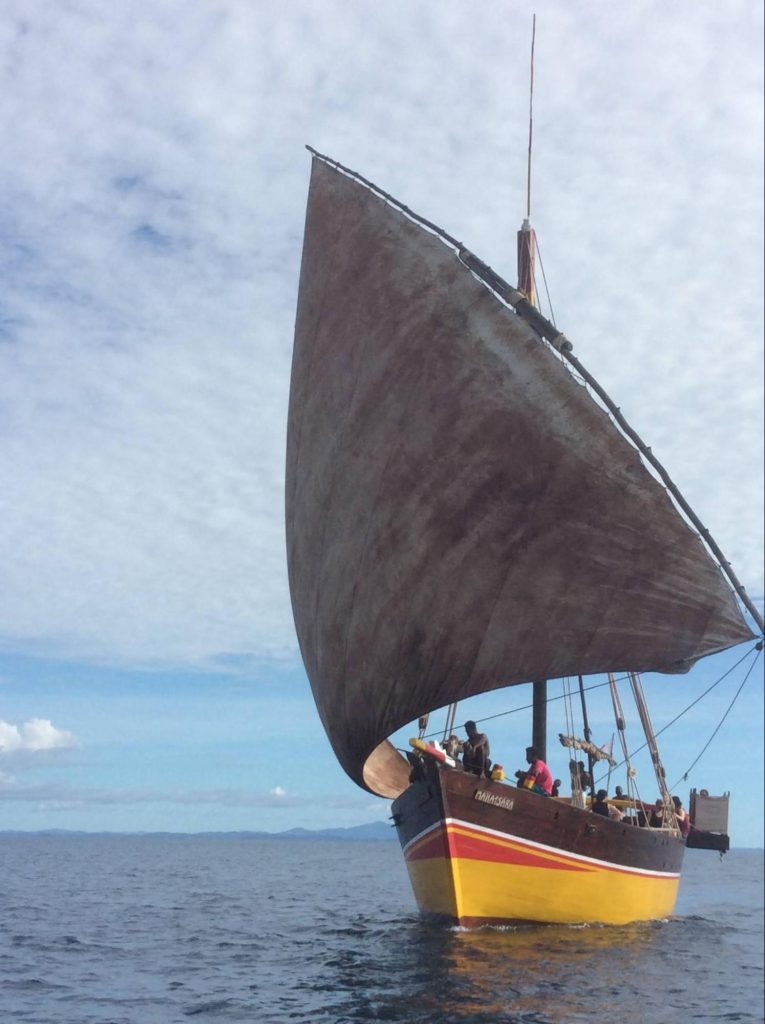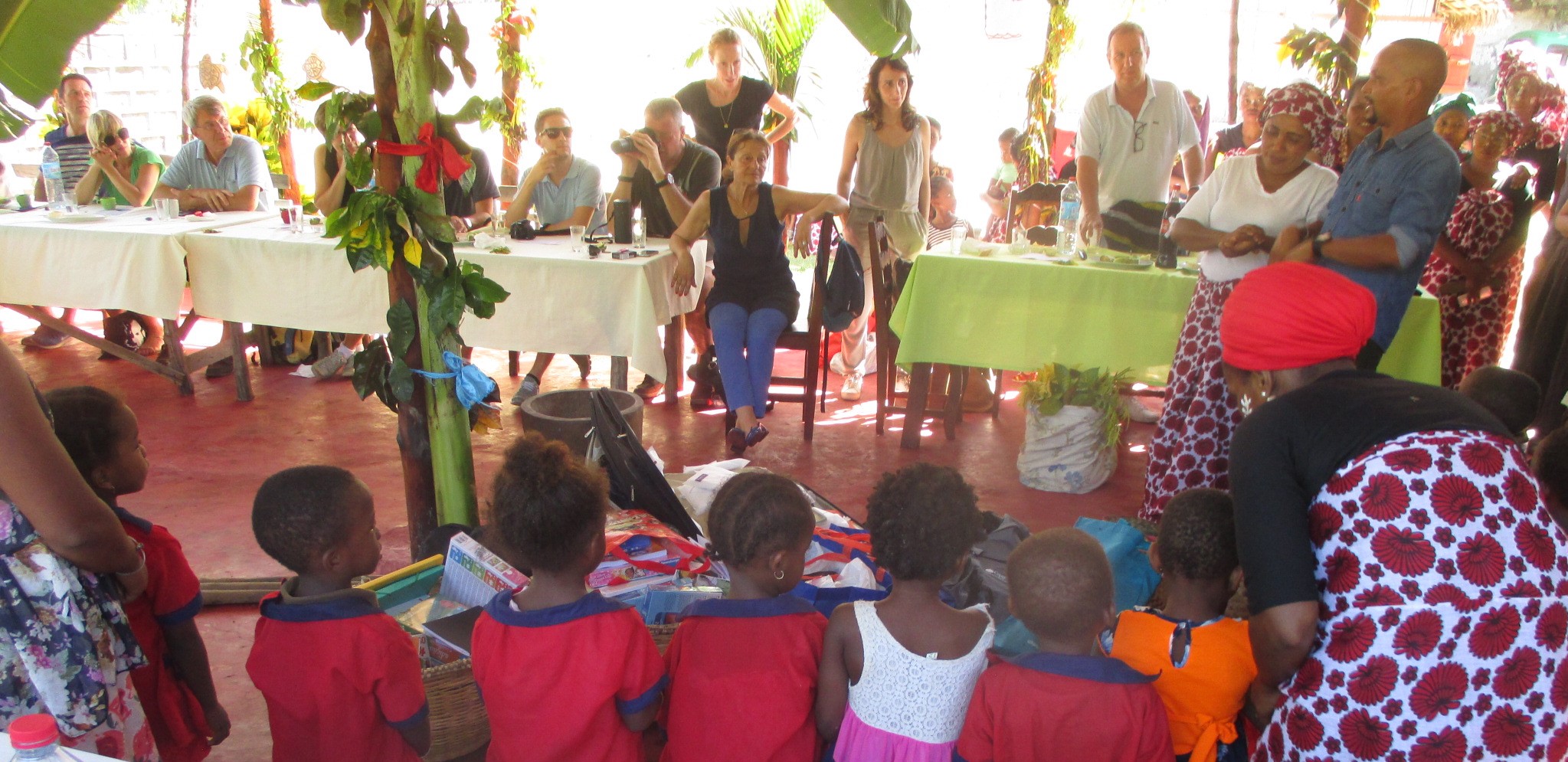The seventeenth and eighteenth century
 At that time the country already has many independent kingdoms . It lies to the south -east , ethnic Arab- Islamic origins ( Antambahoaka , Antemoro , Antanosy and Antesaka ) . The mainly pastoral tribes such as Bara Mahafaly , Antandroy and other Masikoro share the vast areas south of the island. To the west lie the vast realms Sakalava Menabe Boina and that of more recent ( eighteenth century). On the eastern coast, Betsimisaraka base their authority , while in the highlands , the Betsileo Merina kingdoms but also extend their domination. The slave then favors a policy of territorial expansion and benefits those who have firearms. Thus , hegemony Sakalava is explained by the control of major trading posts on the west coast with the support of traders Antaloatra . The Sakalava kingdom will weaken in the late nineteenth century because of succession disputes and disability related to the vastness occupied by a dispersed and nomadic population territories.
At that time the country already has many independent kingdoms . It lies to the south -east , ethnic Arab- Islamic origins ( Antambahoaka , Antemoro , Antanosy and Antesaka ) . The mainly pastoral tribes such as Bara Mahafaly , Antandroy and other Masikoro share the vast areas south of the island. To the west lie the vast realms Sakalava Menabe Boina and that of more recent ( eighteenth century). On the eastern coast, Betsimisaraka base their authority , while in the highlands , the Betsileo Merina kingdoms but also extend their domination. The slave then favors a policy of territorial expansion and benefits those who have firearms. Thus , hegemony Sakalava is explained by the control of major trading posts on the west coast with the support of traders Antaloatra . The Sakalava kingdom will weaken in the late nineteenth century because of succession disputes and disability related to the vastness occupied by a dispersed and nomadic population territories.
The nineteenth century
This century saw the emergence of the Merina expansion , first through the work of unifying sovereign Andrianampoinimerina (1786-1810) who summed up his territorial ambitions with this sentence: ” The sea is the limit of my rice .”
His son Radama 1 ( 1810-1828 ), which continues the work of his father undertaking to conquer the whole island , aided in its policy by the British. The Anglo- Malagasy treaties of 1817 and 1820 recognized as king of Madagascar and provide a cultural and religious military cooperation . In return Radama must first renounce the slave trade . The first troops of King Radama easily control the eastern coast of the island and all of the Highlands but fail in the vast Sakalava country. The reign of the “progressive” Radama first will be short lived , followed by the first queen Ranavalona ( 1828-1861 ) then marked by an anti-European and anti-Christian very traditionalist policy . Later , Prime Minister Rainilaiavony successively married three queens remained in power for over thirty years ( 1864-1895 ) . He wanted to build for his nation building through a new religion: Protestantism.
This period was marked by the development of education and evangelization , especially Imerina , thanks to the introduction of many Christian missions ( London Missionary Society, Jesuits, Anglicans , Lutherans ) and the phonetic transcription of Malagasy with printing the first Bible in Madagascar in 1835 and religious literature in 1866 .
The European influence is distinguished in technical fields thanks to the influence of a man: Jean Laborde (architecture, shoemaking, soap , armory , printing … ) . However, from the second half of the nineteenth century , the Merina monarchy has no economic policy. The consequences are manifested by economic stagnation , an abandonment of conquest, when much of the island beyond its control . The diversion of chores to special interests at the expense of the work of general interest is also an example . During the years 1883-1885 , an expedition was launched by France for the right of ownership in favor of European and protect Sakalava , then allies of the French . This venture would lead to a compromise peace: in return for recognition of the Queen as sovereign Merina of Madagascar, France asked the Prime Minister to restore order on the whole island and also requires a war indemnity .




